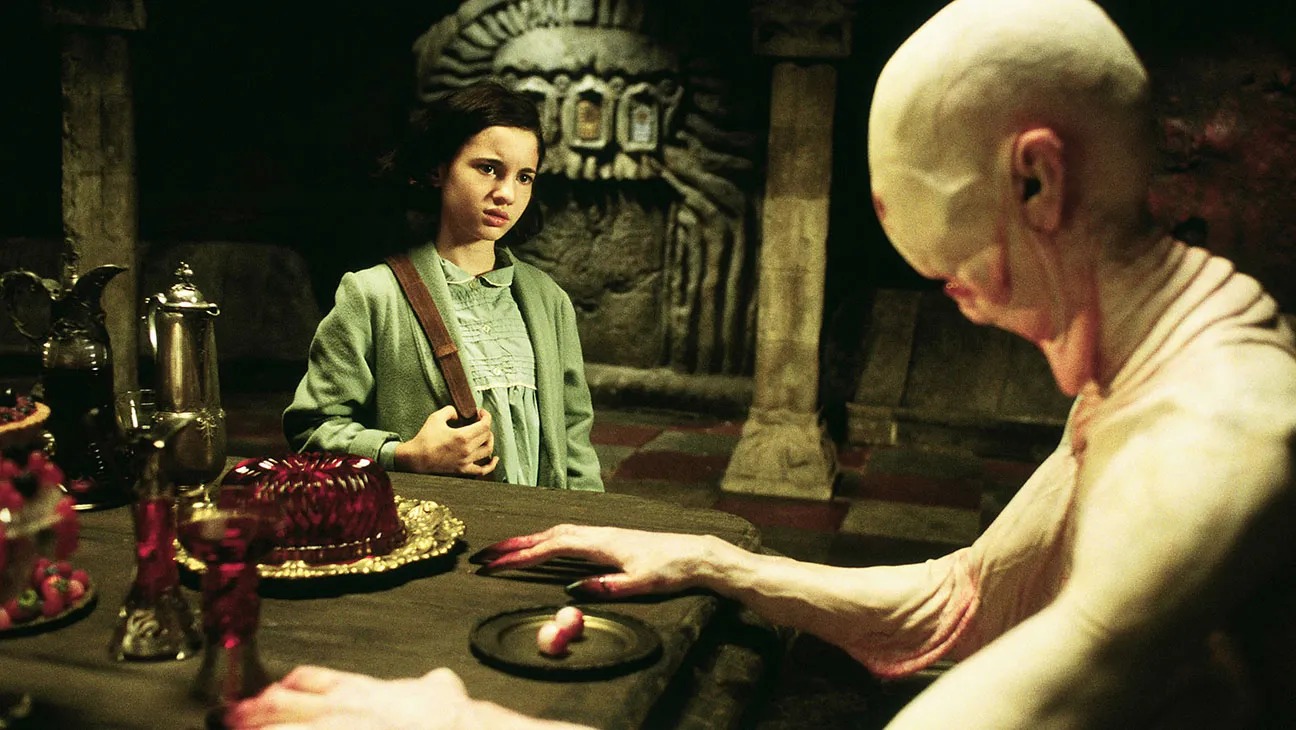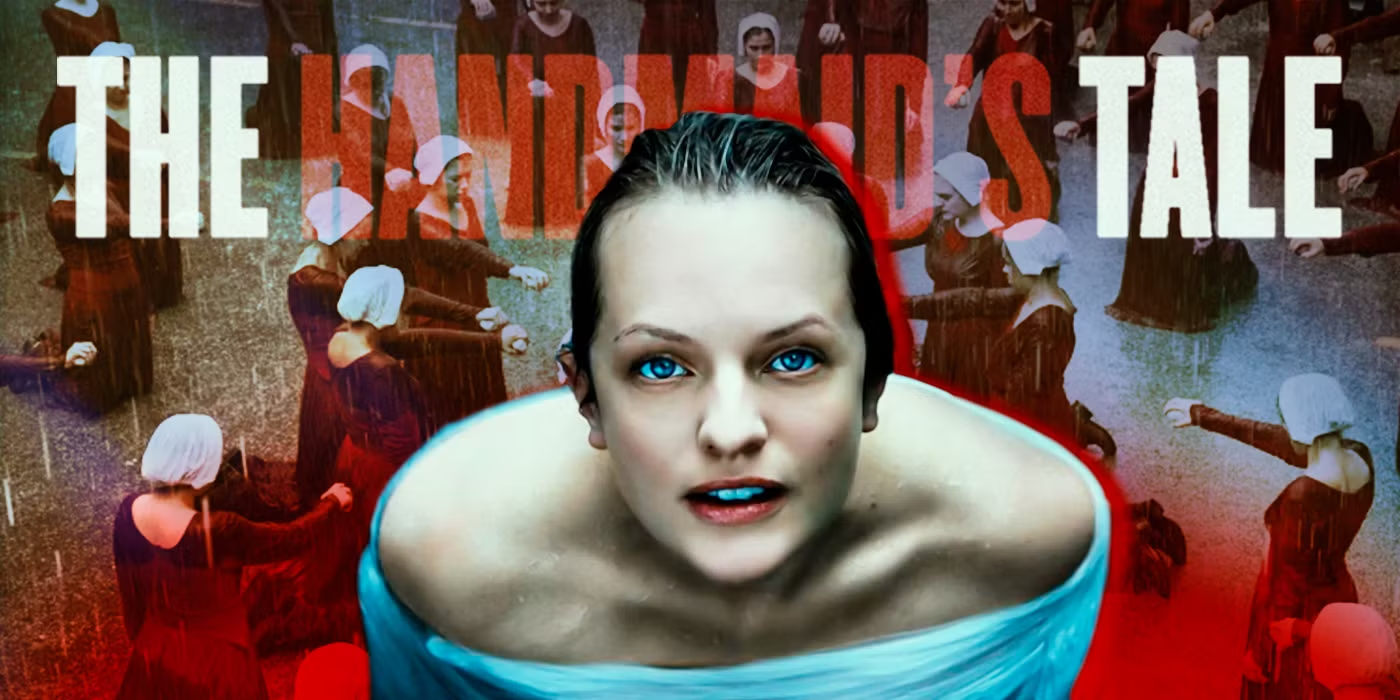Pan’s Labyrinth (2006)

“Pan’s Labyrinth,” directed by Guillermo del Toro and released in 2006, stands as a poignant and visually stunning film that intertwines the fantastical with the harsh realities of post-Civil War Spain. The film has garnered widespread acclaim for its innovative storytelling, rich visual style, and profound thematic depth, cementing its place as a modern classic in both the fantasy and historical genres.
Set in 1944, “Pan’s Labyrinth” follows the story of Ofelia, a young girl who, with her pregnant mother, moves to a remote military outpost commanded by her new stepfather, Captain Vidal. The backdrop of the film is the Spanish Civil War’s aftermath, a period marked by political repression and violence. Amidst this turbulent setting, Ofelia discovers a mysterious labyrinth and encounters a faun who reveals that she is the reincarnation of a lost princess of the Underworld. To reclaim her throne, she must complete three dangerous tasks.

The film’s dual narrative structure—blending the harsh realities of wartime Spain with a darkly enchanting fairy tale—creates a compelling contrast that deepens its thematic resonance. On one hand, the film presents the grim realities of fascist repression, embodied by Captain Vidal’s brutal regime. On the other hand, it immerses viewers in a richly imagined fantasy world that serves as a refuge for Ofelia. This juxtaposition is not merely a backdrop but a vital component of the film’s exploration of innocence, power, and resistance.
The character of Ofelia, portrayed by Ivana Baquero, is at the heart of this narrative. Her journey is both a literal quest and a metaphorical exploration of courage and self-discovery. As she undertakes the faun’s tasks, Ofelia’s resilience and moral integrity become increasingly apparent. Each task is fraught with peril and moral ambiguity, reflecting the broader themes of sacrifice and the struggle between good and evil.

One of the film’s most notable aspects is its visual storytelling. Guillermo del Toro, known for his mastery of visual aesthetics, crafts a world that is both fantastical and hauntingly beautiful. The labyrinth itself, with its intricate design and eerie atmosphere, is a central symbol of the film’s exploration of the boundary between reality and fantasy. The creature designs, including the Pale Man with eyes on his hands and the enigmatic faun, showcase del Toro’s unique vision and contribute to the film’s immersive and otherworldly quality.
The use of practical effects and detailed set designs enhances the film’s authenticity and impact. Del Toro’s commitment to practical effects, as opposed to relying heavily on CGI, lends a tangible quality to the fantasy elements, making them more vivid and affecting. The film’s dark color palette, combined with its striking visual motifs, creates a sense of foreboding that underscores the film’s themes of danger and transformation.

Thematically, “Pan’s Labyrinth” delves into the nature of power and resistance. Captain Vidal’s authoritarian rule symbolizes the oppressive forces that seek to crush dissent and individuality. In contrast, Ofelia’s rebellion, both in the real world and the fantasy realm, represents a defiant stand against tyranny. The fantasy world offers a parallel narrative where Ofelia’s actions have profound implications, reflecting the broader struggle for justice and freedom.
Another significant theme is the loss of innocence. Ofelia’s encounters with the dark elements of her fantasy world mirror the brutality she witnesses in her real life. Her journey illustrates the harsh transition from innocence to experience, as she navigates the complexities of both her external environment and her internal growth.

The film’s score, composed by Javier Navarrete, further enriches its emotional and atmospheric impact. The haunting melodies and orchestral arrangements enhance the sense of wonder and dread, complementing the film’s visual and narrative elements. The music contributes to the overall sense of immersion, making the fantastical elements of the film even more compelling.
In conclusion, “Pan’s Labyrinth” is a remarkable film that skillfully combines elements of fantasy and historical drama to explore deep and resonant themes. Guillermo del Toro’s visionary direction, combined with strong performances and a rich visual style, makes the film a standout work in contemporary cinema. Its portrayal of the struggle between innocence and corruption, and the quest for personal and political liberation, offers a powerful and enduring narrative that continues to captivate audiences around the world. Through its blend of fantasy and reality, “Pan’s Labyrinth” not only tells a compelling story but also invites reflection on the nature of human courage and the power of imagination.











